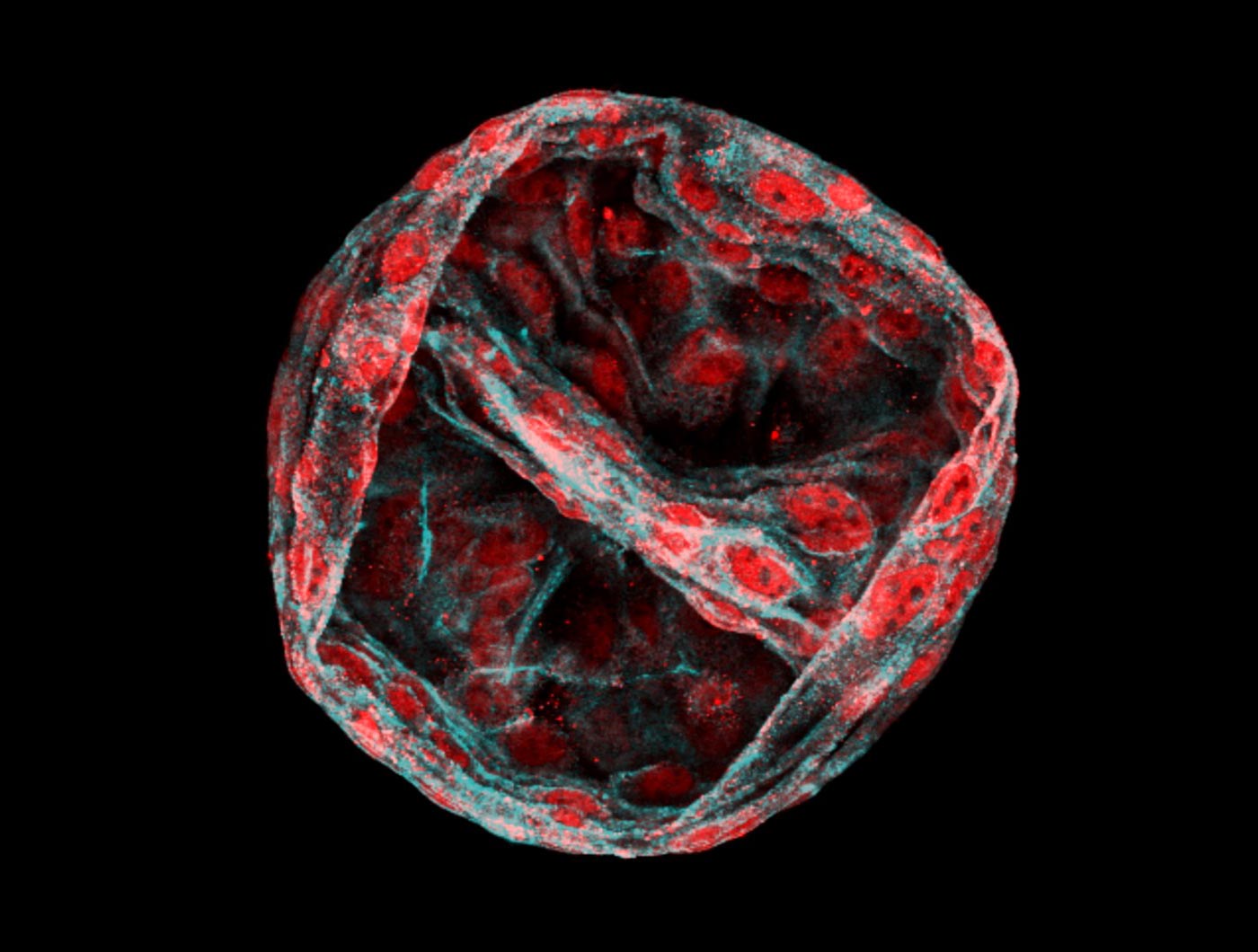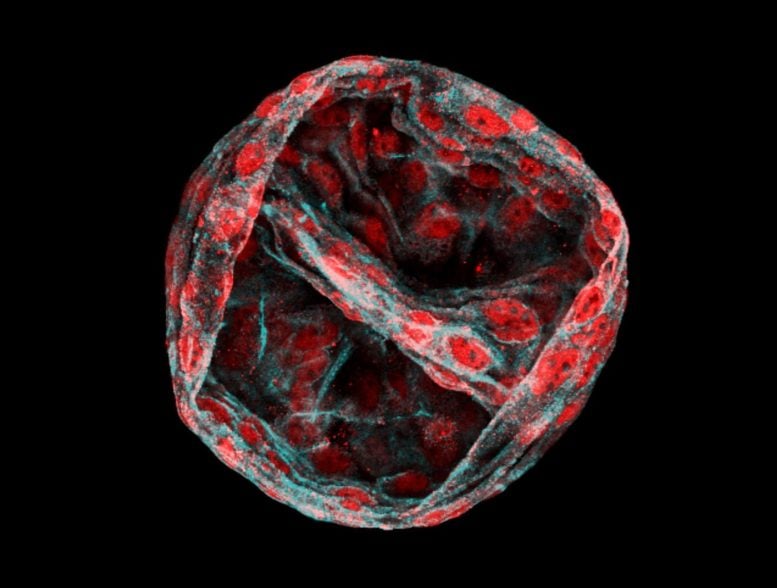

Metabolic enzymes, typically associated with energy production, are now discovered to also play essential roles in the nucleus, such as orchestrating cell division and DNA repair.
This breakthrough, revealed in studies from the Centre for Genomic Regulation, underscores enzymes’ dual functionalities, which could lead to novel cancer treatments, especially for aggressive forms like triple-negative breast cancer.
Researchers at the Centre for Genomic Regulation (CRG) have discovered that metabolic enzymes, traditionally recognized for their roles in energy production and nucleotide synthesis, are performing unexpected “second jobs” within the cell nucleus. In this new role, these enzymes are involved in crucial tasks like cell division and DNA repair.
The findings, detailed in two research papers published today (November 12) in Nature Communications, not only challenge established beliefs in cellular biology but also open new paths for cancer treatment, especially against aggressive cancers such as triple-negative breast cancer (TNBC).
For decades, biology textbooks have presented a compartmentalized view of cellular functions: mitochondria are the cell’s powerhouses, the cytoplasm is a hub of protein synthesis, and the nucleus guards genetic information. However, Dr. Sara Sdelci and her team at the CRG have shown that the boundaries between these cell compartments are more fluid than previously understood, with metabolic enzymes moving across them to support new functions in the nucleus.
Enzymatic Moonlighting in Cellular Biology
“Metabolic enzymes are moonlighting outside of their traditional neighborhood. It’s like discovering your local baker is also a brewer in the next town over. There’s an overlap in the skillset, but they’re doing entirely different jobs for entirely different purposes,” says Dr. Sdelci, lead author of both research papers.
“Surprisingly, their secondary roles in the nucleus are just as critical as their primary metabolic functions. It’s a new layer of complexity that we hadn’t appreciated before,” she adds.
Critical Nuclear Functions of Metabolic Enzymes
In one of the studies, researcher Dr. Natalia Pardo Lorente focused on the metabolic enzyme MTHFD2. Traditionally, MTHFD2 is found in the mitochondria, where it plays a key role in synthesizing the building blocks of life and contributing to cell growth. Pardo Lorente’s work reveals that MTHFD2 also moonlights within the nucleus, where it plays a pivotal role in ensuring proper cell division.
The study is the first to demonstrate that the nucleus relies on metabolic pathways to maintain the integrity and stability of the human genome. “Our finding fundamentally alters our understanding of how cells are organized,” explains Dr. Pardo Lorente. “The nucleus isn’t just a passive storage space for DNA; it has its own metabolic needs and processes.”
Addressing Triple-Negative Breast Cancer
In the second study, researchers Dr. Marta García-Cao and Dr. Lorena Espinar turned their attention to triple-negative breast cancer, the most aggressive type of breast cancer there is. The disease is responsible for around one in eight breast cancer diagnoses and amounts to roughly 200,000 new cases each year worldwide.
Usually, excessive DNA damage triggers cell death. However, TNBC has a propensity to accumulate DNA damage without consequence, making it resilient to conventional treatments. The study helps partly explain why: the metabolic enzyme IMPDH2 relocates to the nucleus of TNBC cells to assist in DNA repair processes. “IMPDH2 acts like a mechanic in the cell’s nucleus, controlling the DNA damage response that would otherwise kill the cancer cell,” explains García-Cao.
Exploiting Cancer’s Metabolic Weaknesses for Therapy
By experimentally manipulating IMPDH2 levels, the team found they could tip the balance. Increasing IMPDH2 within the nucleus overwhelmed the cancer cells’ repair machinery, causing cells to self-destruct. “It’s like overloading a sinking ship with more water — eventually, it sinks faster,” says Espinar. Their approach effectively forces TNBC cells to succumb to the very DNA damage they are typically resilient to.
The study can also lead to new ways of monitoring cancer. The research on IMPDH2 also studied its interaction with PARP1, a protein already targeted by existing cancer drugs. “IMPDH2 could serve as a biomarker to predict which tumors will respond to PARP1 inhibitors,” explains García-Cao.
Therapeutic Strategies and the Future of Metabolic Enzymes
Both studies contribute to an emerging field of therapies targeting cancer by exploiting its metabolic vulnerabilities. “Metabolic enzymes are an entirely new class of therapeutic targets for us to exploit. It paves the way for a two-pronged attack against cancer cells: disrupting their energy production while simultaneously impairing their ability to repair DNA and divide properly. Combining this strategy with conventional treatments could give cancer less room to adapt and help tackle the usual mechanisms of drug resistance,” explains Dr. Sdelci.
While the concept of enzymes having multiple roles within a cell is not entirely new, the studies show the extent and significance of these “second jobs” are only beginning to be appreciated. “This is a paradigm shift and there might be many more moonlighting metabolic enzymes yet to be found,” says Dr. Pardo Lorente. “The cell is more interconnected than we thought, and that opens up exciting possibilities for science and medicine.”
References:
“Nuclear localization of MTHFD2 is required for correct mitosis progression” 12 November 2024, Nature Communications.
DOI: 10.1038/s41467-024-51847-z
“Nuclear IMPDH2 controls the DNA damage response by modulating PARP1 activity” 12 November 2024, Nature Communications.
DOI: 10.1038/s41467-024-53877-z

